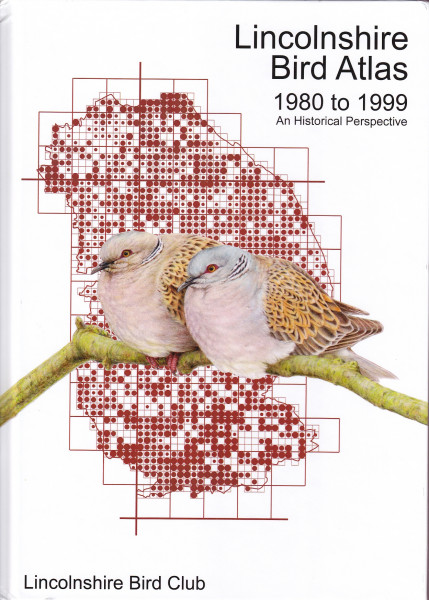
Publisher: Lincolnshire Bird Club
Publication Year: 2020
Binding: 2
Page Count: 180
ISBN Number: 9781716802638
Price: £30.00
Lincolnshire Bird Atlas 1980-1999
Published soon after the series of local atlases that coincided with Bird Atlas 2007–11, you might think the Lincolnshire Bird Atlas would span a similar period. You might expect a lavishly illustrated atlas with up to date distribution maps. You’d be wrong on both counts because this is a very different atlas, one from a different era. An atlas that nearly never was.
There’s a temptation with any atlas to jump straight to the maps but I always recommend readers look carefully at the introductory chapters so they understand how to interpret what follows. This is especially important with the Lincolnshire Bird Atlas because it details the rocky road this project took, from inception in 1980, mothballing in the late 1990s, and three failed revivals in the 2000s before the project was finally brought to publication during 2017–20.
It describes how ‘IT archaeology’ was required to access and extract maps and species accounts produced in the late 1990s. These have been faithfully reproduced, providing a snapshot into the past – not only revealing what bird distributions looked like in the late 20th century, but also what the experts of the day knew about the birds of their county. It documents the distribution of 129 breeding species based on fieldwork between 1980 and 1995, plus short accounts for a further 241 non-breeding species recorded up to 1999. Without the benefit of latterly arriving egrets, buzzards and kites, it is a stark reminder of what we have lost - wall-to-wall Turtle Doves, Redshanks breeding in every saltmarsh-dominated tetrad, and Swallows in over 90% of tetrads.
This book is an important baseline documenting the status and fine-scale distribution of birds in England’s second largest county. I grew up in the Lincolnshire Fens, and fieldwork for this atlas was the first systematic surveying I ever did, so I am delighted to see it published. It brings back memories of finding breeding Lesser Spotted Woodpeckers and searching for Long-eared Owls in Fenland spinneys.
The Lincolnshire Bird Atlas may not be as colourful or elegantly designed as some modern atlases, but there are very good reasons for that and I think it would be a mistake to judge it harshly. It contains a wealth of information that was almost lost, but here it is preserved for future generations of researchers and birders
I recommend this book to everyone who took part and to anyone with an interest in Lincolnshire’s birds.
Book reviewed by Simon Gillings
Buy this book




Share this page